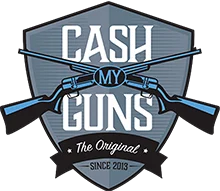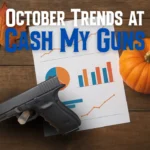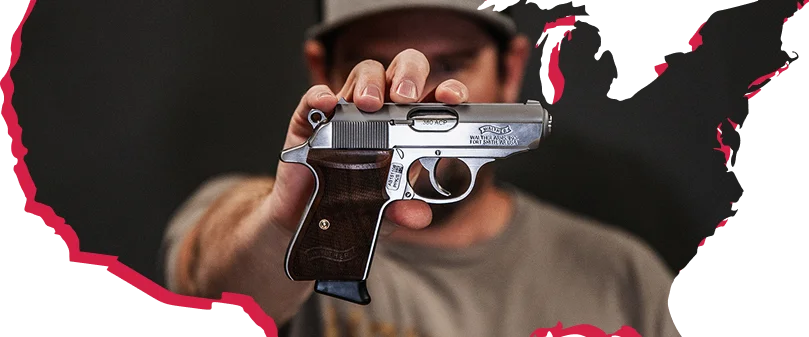The Glock 17 holds its value better than most handguns on the secondary market. If you’re looking to sell your Glock 17 in 2026, you’re sitting on a pistol that buyers actively want. Current market prices range from $350 for well-used Gen 3 models to $550+ for near-mint Gen 5 versions.
What Determines Your Glock 17’s Worth
Three factors control what you’ll get for your Glock 17: generation, condition, and what’s included with the sale. Generation matters more than most sellers realize. The Gen 5 models command premium prices because they’re still relatively new to the used market. Gen 4 pistols sit in the middle, while Gen 3 models have settled into their long-term value range.
Condition is straightforward. A Glock 17 with minimal holster wear and a clean bore will fetch 20-30% more than one showing heavy use. The finish on the slide tells the story. Light scratches and handling marks are normal. Deep gouges, rust, or pitting will drop your price fast.
2026 Price Breakdown by Generation
Gen 5 Glock 17 (2017-Present)
Gen 5 models are bringing $475-$550 in good to excellent condition. The MOS (Modular Optic System) versions push toward the higher end, sometimes cracking $600 if they include the original optic plates and all factory accessories. The market absorbed enough Gen 5 pistols by 2024 that prices stabilized. You won’t see the wild fluctuations that happened in 2020-2021.
A bone-stock Gen 5 with three magazines, original case, and minimal wear sits at $500 right now. Add an optic cut or upgraded sights, and you might gain $25-50. But aftermarket triggers or internal modifications? Those rarely add value and sometimes hurt it.
Gen 4 Glock 17 (2010-2017)
Gen 4 pricing lands between $400-$475 depending on condition. These pistols hit the sweet spot for buyers who want modern features without paying Gen 5 premiums. The interchangeable backstraps and dual recoil spring system made Gen 4 a solid upgrade from Gen 3, and that still resonates with buyers.
Police trade-ins flooded the market in 2023-2024 as departments upgraded to Gen 5. This pushed Gen 4 prices down about $50 from their 2022 highs. If you bought one new in 2015 for $549, you’re looking at roughly 73% value retention after a decade. That’s exceptional for a duty pistol.
Gen 3 Glock 17 (1998-2010)
Gen 3 models run $350-$425 in today’s market. The lower end covers department trade-ins with holster wear and high round counts. The upper range applies to private-owner guns with documented low use. Gen 3 pistols remain popular with shooters who prefer the finger grooves and don’t need the latest features.
California and states with restrictive rosters keep Gen 3 prices slightly elevated in those markets. A Gen 3 that would sell for $375 in Nevada might bring $450 in California because buyers there have limited new options.
Gen 2 and Earlier Models
Pre-1998 Glock 17 pistols occupy a small collector niche. Values depend heavily on specific markings and production dates. Early Austrian-made examples with desirable serial number prefixes can exceed Gen 5 prices among collectors. But standard Gen 2 models typically sell in the $350-$400 range, competing directly with Gen 3 pricing.
How Modifications Affect Value
Most modifications reduce what you can get for your Glock 17. Buyers want factory or close to it. A Cerakote finish in anything other than black usually costs you $50-75 in final sale price. Stippling on the grip frame does the same. Trigger upgrades, extended controls, and aftermarket barrels rarely transfer their cost to the buyer.
The exception is quality night sights. Trijicon or Ameriglow tritium sights in good condition can add $40-60 to your pistol’s value. Optic cuts matter only if you’re selling to someone specifically looking for that feature, and you still won’t recover what you paid for the milling work.
Keep all your original parts. A modified Glock 17 with the factory components included sells faster and for more money than one missing the stock trigger or barrel.
Regional Price Variations in 2026
Geography creates price swings. California, New York, New Jersey, and Massachusetts see Glock 17 prices run 15-25% higher than free states due to roster restrictions and permit requirements. A Gen 3 worth $375 in Texas might fetch $475 in San Francisco.
Rural areas tend toward lower prices than urban centers. Population density drives demand, and demand drives prices. But selling in a rural market means potentially waiting longer for the right buyer.
Online vs Local Sales
Online platforms like GunBroker show higher asking prices but come with fees and shipping hassles. Completed auction data from late 2024 shows Gen 4 Glock 17 pistols closing between $425-$500 after spirited bidding. But factor in transfer fees, shipping costs, and the seller’s commission, and your net drops $75-100 below that final hammer price.
Local gun stores typically offer 60-70% of retail when buying used firearms. That same Gen 4 bringing $475 on GunBroker might get a $325 offer from your local shop. They need margin to clean, test, and resell it.
Private party sales in free states usually land somewhere between these extremes. Meeting a buyer face-to-face eliminates shipping and transfer fees, but you’re limited to your local market.
The FFL Buying Advantage
Working with a licensed dealer who buys firearms nationwide solves several problems at once. You get competitive pricing without the hassle of dealing with shipping, finding an FFL, or vetting private buyers. Cash My Guns operates in all 50 states and provides instant quotes based on current market conditions.
The process is simple. Submit photos and basic information about your Glock 17. Get a firm cash offer within hours. If you accept, they handle all transfer paperwork and logistics. Payment arrives quickly, usually within days of receiving your firearm.
What Increases Your Offer
Original packaging and accessories make a difference. The factory case, all three magazines, cleaning tools, and documentation can add $50-75 to your final offer. A Glock 17 with just the pistol and one magazine will price lower than a complete set.
Maintenance records help if you have them. Documented round counts, professional cleaning, or recent inspection by a gunsmith demonstrate care and can bump your price upward.
Quality photos speed the evaluation process. Clear images of both sides, the bore, any wear areas, and the serial number location let buyers assess condition accurately. Better photos mean fewer questions and faster offers.
When to Sell Your Glock 17
January through March typically brings higher prices as buyers spend holiday money and tax refunds. Summer months slow down except for concealed carry pistols, and the Glock 17’s full-size frame means it’s not the first choice for summer carry.
Election years create volatility. The 2024 cycle pushed prices up modestly in the months before November. Post-election, prices normalized quickly. But waiting for political uncertainty to drive prices higher is speculation, not strategy.
The best time to sell is when you’ve decided you don’t need the pistol anymore. Trying to time the market for an extra $25-50 means you’re still storing and insuring a gun you’re not using.
Common Pricing Mistakes
Sellers consistently overvalue their pistols based on what they paid new. A Glock 17 Gen 4 purchased for $549 in 2015 is not worth $549 in 2026. Depreciation happens, even with Glocks.
Emotional attachment clouds judgment. Your first handgun, the one you qualified with, the pistol you carried for years—these memories don’t add dollars to the sale price. Buyers care about condition and function, not history.
Waiting for your “asking price” costs money. Every month a pistol sits unsold is a month you could have had cash working for you elsewhere. Price it to sell, not to satisfy what you think it should be worth.
Market Outlook for 2026
Glock 17 prices should remain stable through 2026 barring major political or economic disruption. The platform is mature, production is consistent, and demand stays steady. Gen 5 prices might soften slightly as more used examples enter the market, but don’t expect dramatic moves.
The wildcard is legislation. State-level restrictions or federal changes could spike demand temporarily, but predicting politics is fool’s work. Price your pistol based on current market conditions, not speculation about what might happen.
Frequently Asked Questions
Do high round counts hurt Glock 17 values?
Yes, but less than you’d think. A well-maintained Glock 17 with 10,000 documented rounds might lose $25-50 compared to a low-round example. But a pistol with obvious wear, damaged internals, or poor maintenance will drop 20-30% regardless of round count.
Should I sell magazines separately?
No. Glock 17 magazines bring $20-25 each when sold alone, but a complete pistol with multiple magazines sells faster and for more total money than splitting everything up. Buyers prefer ready-to-shoot packages.
What if my Glock 17 has been recalled?
Have the recall work completed before selling. Glock handles recalls quickly and free of charge. A pistol with open recall status will either sell for significantly less or not sell at all. Complete the repair, document it, and maintain full value.
Do threaded barrels add value?
Minimally. A factory Glock threaded barrel might add $30-40 to the right buyer, but it also limits your buyer pool since many people don’t want or need that feature. Aftermarket threaded barrels typically add nothing.
How do I prove my Glock 17’s condition?
Photos work for most sales. Clear images of the exterior, bore, and any wear areas give buyers what they need. For higher-value transactions, a written inspection from a gunsmith costs $25-50 and can justify premium pricing if the pistol is in exceptional condition.
Get a Cash Offer Today
Cash My Guns buys Glock 17 pistols in all conditions and generations. We’re FFL licensed in all 50 states and provide fast, fair offers backed by current market data. No listing fees, no auction waiting, no shipping hassles.
Submit your Glock 17 for evaluation and get a firm cash offer within hours. If you accept, we handle everything from there.








